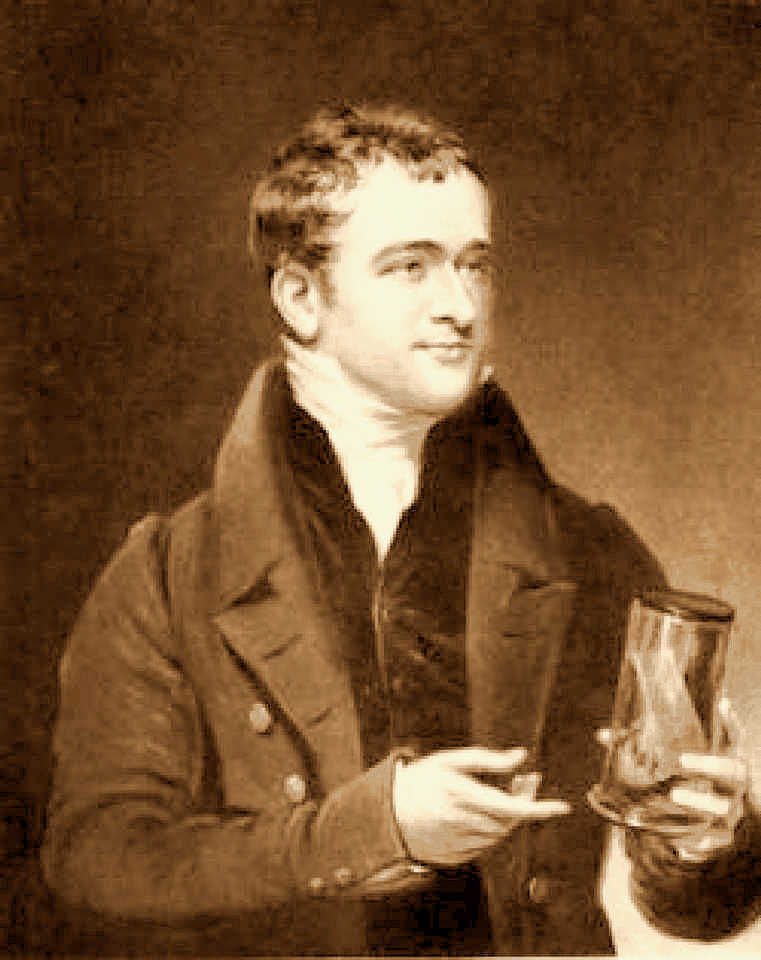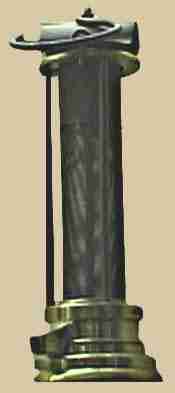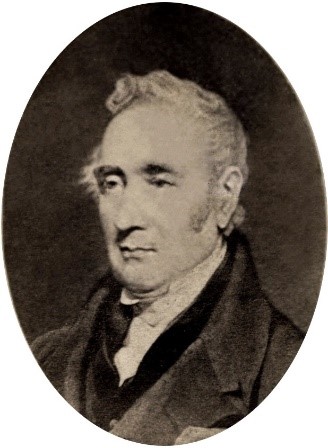In 1815 Britain’s industrial power helped end the war against Napoleon’s France at the Battle of Waterloo. The industrial revolution was picking up speed and more and more people were moving into the cities to work in factories producing metal goods and textiles. The iron works, the steam engines, the new coal gas works and homes, offices and factories all required coal. Mines were being opened up across the country.
As coal mines were dug deeper, the risks to the miners increased. One danger was firedamp, a gas which came out of the coal seams and filled the shafts. The candles that the miners carried to light their work ignited the firedamp causing explosions that killed many miners. In 1812 ninety-two miners had been killed in a blast at a new mine. There were so many explosions and deaths that people started to take notice. In 1813 a Society for Preventing Accidents in Coal Mines was formed near Sunderland. The Chairman was a clergyman, Dr Robert Gray. The answer to the problem seemed to be either better ventilation of the mines to get rid of the firedamp or a means of lighting the shafts that separated the flame of the candles or oil lamps from the gas.

In 1815 Gray wrote to Humphry Davy to ask for his help. At the time Davy was probably the most famous scientist in Britain. As Director of the Royal Institution in London he had discovered and isolated the reactive metals, sodium, potassium, magnesium and calcium and carried out other important research. Tickets to his lectures at the RI were sought after and he was a respected Fellow of the Royal Society. He was even a friend of the Prince Regent, later King George IV.
Davy responded eagerly to Gray’s request and began to study the problem in his laboratory at the RI. He was sent samples of the firedamp collected from mines and he soon identified it as methane. Next he experimented on the flammability of the gas. He found that it would only explode if there was neither too little nor too much air mixed with it and that a high temperature was necessary to ignite it. He found that if a mixture of air and methane was passed down narrow glass tubes it would not ignite. Using this result he designed the first version of an oil lamp that could be used in mines. The flame was enclosed in glass with narrow tubes to draw in air and take away the waste gases. Davy reported to Gray at the end of October, 1815 and to the Royal Society in early November.

He was able to explain his observations using what we now call the Fire Triangle. The narrow tubes had a large surface area so if some gas ignited the heat was lost quickly and the temperature of rest of the mixture of methane and air remained too low to set off an explosion. Davy soon found that a metal gauze worked as well as the glass tubes and allowed a much simpler design. The gauze allowed air to enter the lamp to allow the oil or candle to burn. Firedamp might enter the lamp as well and flare up but the flame would not travel through the gauze. The metal conducted heat away from the flame so that the mixture of gases outside the lamp could not be ignited. The simple, easy to use design was soon taken up by coal miners and as long as the safety lamps were looked after and the gauzes replaced if they became damaged then the mines could be lit safely. However not all mine owners provided the lamps and there were many other dangers that continued to kill miners.
The success of the safety lamp brought Davy yet more awards. He was made a Baron, the highest honour given to a scientist up to then. The coal mine owners gave him a dinner service in silver plate worth £1500 largely because he refused to patent the design so received no payment for the lamps that were sold. Not everyone was happy however.

In Newcastle, George Stephenson had also been working on a solution to the firedamp problem. By trial and error he had come up with a lamp very similar to Davy’s which became known as the Geordie Lamp. Stephenson was an engineer who later became famous for his design of early steam locomotives such as The Rocket that carried passengers on the first public railway line. He claimed that he had been first to develop a safety lamp and that Davy had stolen ideas from others. A committee of the Royal Society was set up to investigate the dispute. It concluded that Davy had independently discovered the principles used in the safety lamp and that he had used these principles in the design of the lamp. Davy was therefore judged to be the sole inventor of the miners’ safety lamp, but Stephenson’s supporters never accepted defeat and the arguments continue to this day.
Davy’s safety lamp continued to be used in mines even after safer electric lights were introduced as it indicated when there was a dangerous level of firedamp in the air. The safety lamp is significant however not just for the number of lives it saved in mines across the world but for being probably the first occasion that scientific research was carried out in a laboratory to solve a real life problem. Davy’s example lead to the partnership between science and engineering common in industrial and government research today. It was also the first time that health and safety became a concern of people and institutions other than the workers themselves who endangered their lives.
Activities
1) You can replicate Humphry Davy’s research by carrying out the following experiment. Carry out this experiment under supervision. You need: Bunsen burner, bench mat, clamp stand or tongs, metal gauze, splints, matches or lighter. Wear eye protection.
- Place the Bunsen burner on the bench mat, connect it to the gas and check that the hole is closed. Hold the metal gauze about 10 cm above the burner.
- Light a splint. Turn on the gas and hold the lighted splint between the top of the burner and the gauze. Record what you see happen then turn off the gas. Does the gas ignite above or below the gauze?
- Light a splint. Turn on the gas and hold the lighted splint above the gauze. Record what you see happen and then turn off the gas.Does the gas ignite above or below the gauze?
- Explain your observations in B and C.
2) Find out more about the life and work of Humphry Davy and of George Stephenson. Make a presentation of the important events in their lives.
3) Design a poster advertising the “new” Miners’ Safety Lamp to encourage mine owners and workers to use it.
4) (a) What is the Fire Triangle?
(b) How is the Fire Triangle used in Davy’s Safety Lamp?
(c) One solution to saving miners was to improve ventilation in mines. How does the Fire Triangle explain this method?
(d) Davy concluded that improved ventilation wasn’t a complete answer to preventing explosions. Explain Davy’s reasoning.
5) The Royal Society and other important people supported Davy in his dispute with Stephenson. Suggest reasons for this.
6) “The invention of the Safety Lamp was a triumph for the application of science to real problems”. Discuss this statement.
Bibliography
Humphry Davy: Science and Power, David Knight, pub. Cambridge University Press 1992


